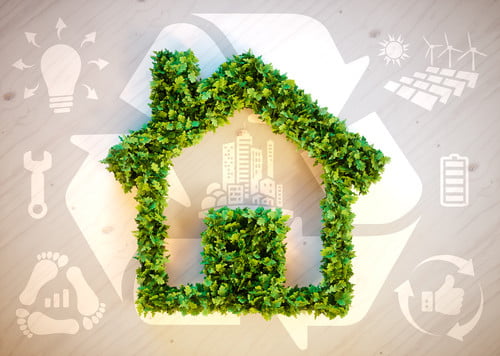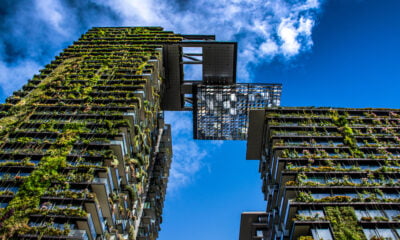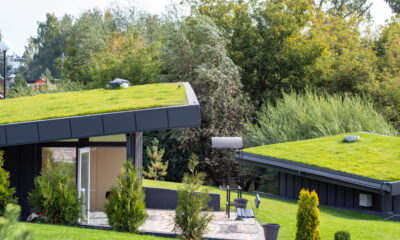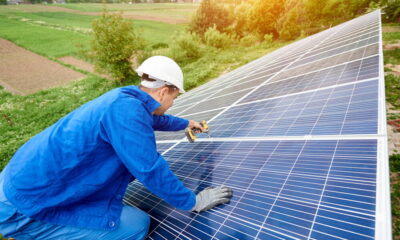It’s hard to find an industry that isn’t being affected by the idea of “going green.” Fast food restaurants run advertisements about ditching plastic and computer companies talk about how their components are now more energy efficient.
The construction industry is another field that is also caught up with the idea of going green. Such an industry requires lots of energy output and can shape the way that many buildings and homes operate for the future. Many consumers are clamoring for more green trends, as they are realizing not only the environmental impact but also the financial side.
This industry has been undergoing some changes in order to make it more eco-friendly and green. Below, we’re going to dive into six of those trends that are better shaping the construction industry.
Being as Efficient as Possible
Everyone loves to be efficient! The idea is you’re going to accomplish the most amount of things in the best time possible. In the construction industry, this is all about accomplishing the most with the least amount of effort.
While there are plenty of energy-efficient tools and appliances that can be used after construction is completed, many companies are examining things like which materials they use and how they obtain those materials.
Better installation and building guides are put into place to ensure that construction goes as speedily as possible while using time wisely.
Using proper insulation and materials can reduce the amount of heat loss as well as using passive means is a way to make sure energy use is efficient and well-maintained.
Biomimicry
Try saying that five times fast!
What is biomimicry? The dictionary defines it as “the design and production of materials, structures, and systems that are modeled on biological entities and processes.”
So, what does that mean?
It points to the idea of using nature as an inspiration for structures and materials. You can find examples of biomimicry throughout many fields, such as technology and transportation. There are plenty of examples found in architecture as well.
The idea is that nature, animals, insects, etc. have survived so long due to their natural or evolved abilities. We should be copying them to improve water efficiency, reduce waste, better insulate buildings, and many other methods.
Turning Waste Into Fuel
Renewable energy is still a bit away from being the be-all, end-all when it comes to energy consumption and turning waste into fuel might be the most ideal middle ground.
Instead of simply discarding waste and letting it rot, many places are using that energy and turning it into fuel that can be used. Waste can be burned or repurposed in order to bring about maximum efficiency.
The big hurdle at the moment is finding a system or mechanism that is cost-effective. Currently, all such ideas have incredibly high up-front costs, discouraging people from using them.
Seeking Out New Materials
It’s safe to say that’s out with the old and in with the new in many cases. Many construction companies are turning to renting out certain equipment for long-term use instead of buying them, making it more cost-effective. It’s not quite Uber, but it’s close.
Plenty of companies are also looking at new materials to be more efficient and cost-productive. Alternate building materials are being sought out more and more by architects and construction companies, making them a significant trend.
Bamboo is proving to be quite sustainable in new buildings, doubly good news as it’s also quite easily grown and harvested.
Recycled plastic is also making huge waves, as this is a way to lessen plastic waste while repurposing it for a better future.
21st Century Offices
Stepping away from the construction site, construction offices are also making big waves when it comes to joining the green revolution. No longer will office workers have to drive around to collect data on their workers, but can do so through software and management through their home base.
Conclusion
Plenty of other tools and advances in technology are making building services and operations much more efficient and smoother. These small changes can make workers more efficient and streamline the whole process, creating less waste in the process.


 Environment9 months ago
Environment9 months agoAre Polymer Banknotes: an Eco-Friendly Trend or a Groundswell?

 Environment11 months ago
Environment11 months agoEco-Friendly Home Improvements: Top 7 Upgrades for 2025

 Features8 months ago
Features8 months agoEco-Friendly Cryptocurrencies: Sustainable Investment Choices

 Features10 months ago
Features10 months agoEco-Friendly Crypto Traders Must Find the Right Exchange






























